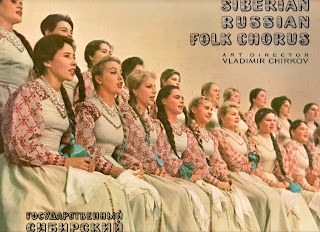07 Estrellita.m4a
http://www.box.net/shared/0lcixk29f5cklm3y5ouq
 |
Latin Sampler
Record sleeve, Allegro 1908
Record Corp. of America, 1956 |
Ask me what I think the most beautiful name for a woman is and without hesitation I'll answer Maria. I always adored that name and the few I've met are beautiful people. It was my destiny that I would end up marrying a Maria, and she is beautiful. During our white bread weeks I made her mix tapes, all with happy and sweet music about love and romance. On one of those tapes I collected all the singers I had available named Maria. Back then (14 years ago) it was not easy to fill a C60. I had to use three Maria Callas arias to fill an hour's worth. Now it would be easy as cake because ever since that tape I've kept up the collection. Don't ask me how many different singers I have, I lost count, there must be at least forty. The name Maria is found in many places. I have records from Poland, Russia, Spain, Portugal, from all over Latin America, but (unless you consider Maria Callas an American) the only American Maria in my collection is one record by Maria Muldaur. Maria Callas, of course, is the most famous of them all. I love Maria Callas. I have twelve records dedicated to the American born Greek opera diva and many of these are box sets. The aria Casta Diva is her signature song and one of her recordings of it represents for me the most beautiful voice on record.
The latest addition to my Maria collection is a song on the compilation record Latin Sampling by a singer named Maria Plaza. I have no idea where the singer is from or anything about her, but there is a picture of her on the sleeve. The treasures I find in thrift stores often have no presence on the web. There are various Maria Plazas found on the web but all refer to geographical entries. The sampler itself is not that interesting. The record contains commercialized Latin beats, romantic Latin mood orchestras, and even an instruction how to dance the rumba (I tried it, but I suck at dancing). Only the very last track of the record has artistic and aesthetic merit. Indeed, this is the Maria Plaza tune Estrellita. First you think the tune is going to turn into On the Sunny Side of the Street but then the aria Casta Diva lingers through the rest of it. Every time Plaza hits the high note at the end of a strophe I hear Casta Diva setting in. Estrellita, so I learn through Google, is a song written by the Mexican composer Manuel Ponce in 1912. Like Casta Diva it has been performed by numerous singers and musicians.
Casta Diva is from the opera Norma written by Vincenzo Bellini (libretto by Felice Romani), it premiered at La Scala in 1831. This is the English translation of Casta Diva.
Pure Goddess, whose silver covers
These sacred ancient plants,
we turn to your lovely face
unclouded and without veil...
Temper, oh Goddess,
the hardening of you ardent spirits
temper your bold zeal,
Scatter peace across the earth
Thou make reign in the sky...
...and then the English translation of
Estrellita
Little star of the distant sky,
you see my pain,
you know my anguish.
Come down and tell me
if he loves me a little,
because I cannot live without his love.
You are my star, my beacon of love!
You know that soon I shall die.
Come down and tell me
if he loves me a little,
because I cannot live without his love.
















